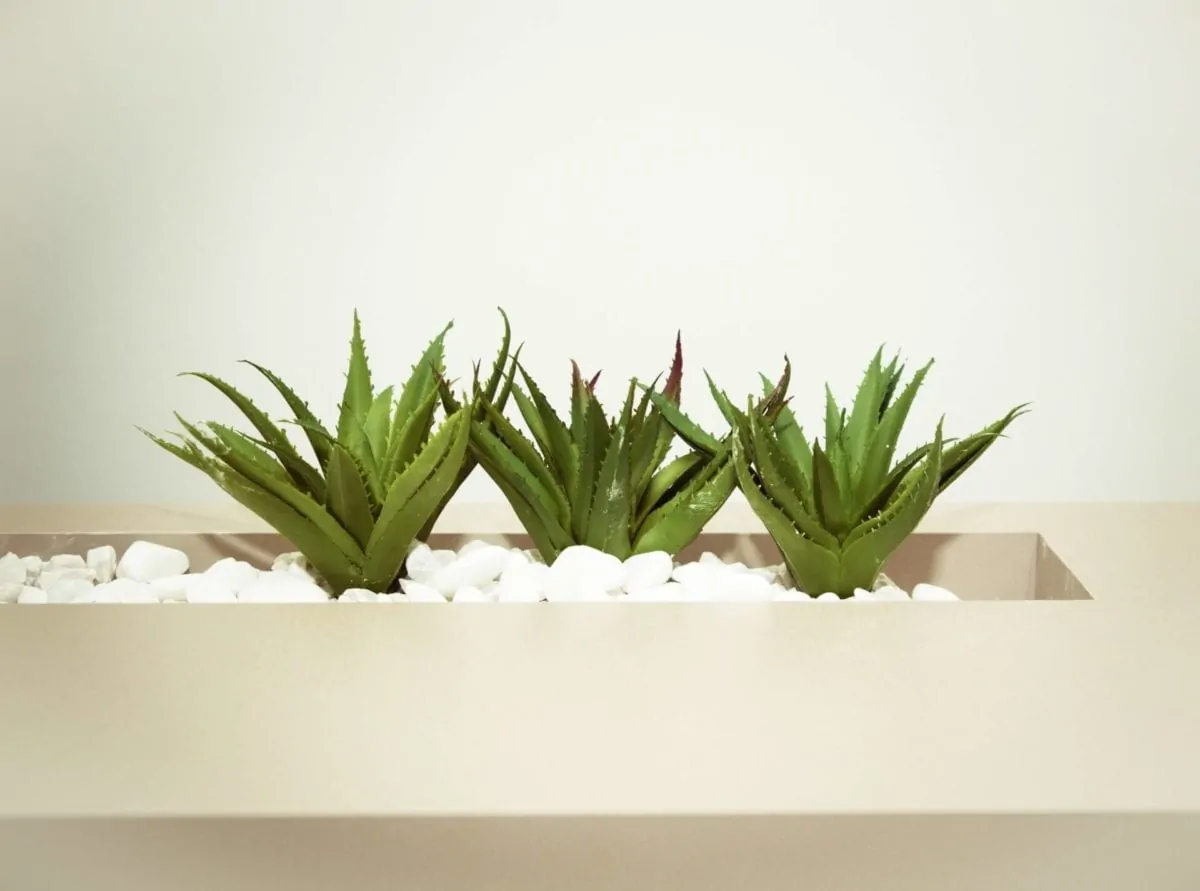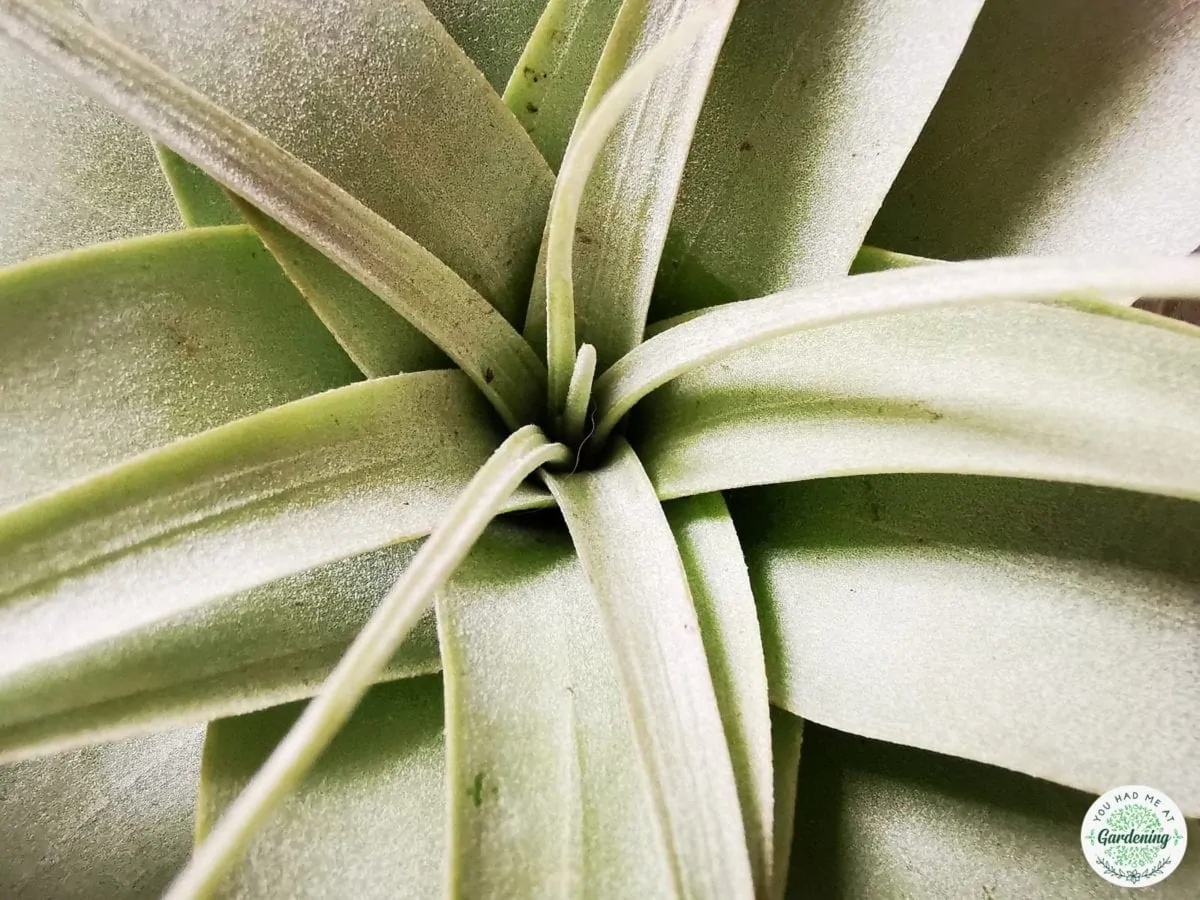


There are as many types of air plants as ways to display them – vertical gardens, terrariums, attached to wood or stone. However, when it comes to air plant care, a lot of people get it wrong.
Air plants, also known as Tillandsias, are epiphytes in nature, which means they use their roots to attach to trees and rocks, and not to absorb nutrients from soil. The nutrients and water required for growth are then absorbed through their leaves, as they are covered in specialized scales called trichomes.
Caring for an air plant is super easy, as they are very forgiving. All you need to know is that they need nutrients and moisture, and they can’t survive only on air, even if their name says so.
In this article, we’ll discuss everything you need to know about air plant care – from growing requirements to possible pests and diseases.
Since air plants are tropical plants, they need bright, indirect sunlight.
If the air in your home is humid, the air plant will tolerate more light than a plant grown in a dry home. A sunny bathroom is an ideal spot for all types of air plants.
If you can’t provide enough light, you can always supplement it with some artificial lighting options. Make sure to use a full-spectrum fluorescent light, so your air plant can photosynthesize. Placing it about three feet from the light source for about 12 hours per day should do the magic.
Since air plants absorb nutrients and water through their leaves, proper watering is very important.
Again, the humidity in your home provides a clue on how much water your air plant will need.
If placed in a dry room, your air plants should be watered every five days or so. In a humid home though, watering every ten days should be enough.
Since the Tillandsia is not rooted in soil, it is easy to soak the entire plant in a basin or bowl of water for ten minutes. This is best done in the mornings.
If you have several air plants, they can all swim together! After ten minutes, shake off the excess water, and lay the plants upside down on a towel. It can take up to three hours to dry, but it is very important that the air plant dries completely or otherwise, the plant may rot.
If your air plant’s tips turn brown and curl, it means that it needs more water. However, if the leaves turn brown, this may indicate overwatering. Black leaves mean the air plant is rotting and unfortunately belongs in the compost bin.
In between soakings, air plants should be lightly misted.
All types of air plants prefer warm temperatures. Unless you live in USDA zones 10 and above, the Tillandsia must be grown indoors, and your home must be warm (50F to 90F).
Air plants can also tolerate a nighttime decrease in temperature of up to 10F degrees as this mimics desert climates.
When it comes to fertilizing your air plants, the best options are the ones used for orchids or bromeliads.
All you have to do is add a pinch of fertilizer to the soaking water once per month.
View this post on Instagram
Air plants usually bloom once in their lifetime and that happens when they have reached their maturity.
The bloom may last several days to several months depending on the type of plant. Once the bloom appears, the plant has reached the peak of its life cycle and will begin to slowly die.
That’s the bad news, but there is also good news! When an air plant is close to maturity, it starts producing pups or baby air plants. This means your air plant is propagating itself.
The pups can be safely removed from the mother to be self-contained when they have reached half the size of the mother.
Tip: When watering air plants, make sure to keep the blooms out of water.
There is no limit to the creative ways of displaying air plants in your home. However, there are a few things you need thttps://youhadmeatgardening.com/wp-content/uploads/2019/10/tillandsia-xerographica.jpgo know about displaying in a way that ensures proper care.
A Tillandsia (or more) placed in a terrarium or glass bowl can look stunning on a bookshelf or coffee table, as long as the mouth of the bowl allows you to remove the plant for soaking.
Tip: Keep in mind that a bowl or terrarium creates a micro-climate with greater humidity and the plant may need less watering. It’s best not to place a glass container right on a windowsill as glass will intensify the sun’s heat and the plant will burn.
If the air plants cannot be removed from their glass home because of their size, then you should only water the air plant by misting.
Tip: The plant needs air circulation, which means that the smaller the container, the longer the drying out will be. Less frequent watering will be needed. Larger glass containers will provide greater air circulation so your air plants should be misted more often.
For air plants that are mounted on walls or glued to wood or other mediums, misting rather than soaking will be required.
Tip: Remember to mist all around the plant, rather than on its front, as this will create a humid environment.
Another great way of displaying is by using an air plant holder. There are so many fabulous and cheap air plant holders like this one on Amazon.
For some great ideas on displaying air plants, check out this video:
An air plant that has spent its entire life indoors has a very low risk of attracting the bugs we may find in other houseplants.
Also, having no soil obviously means that pests who thrive in soil do not affect Tillandsia. (Amazing, isn’t it?)
However, it isn’t impossible to see bugs like aphids or mealybugs on your air plants; in this case, a good soak or, if needed, a sprinkle of Diatomaceous Earth should solve the problem.
Air plants are non-toxic to humans and pets.
Their spiky shape may be attractive to some animals, however, so it is always recommended to keep your air plant out of your pets and children’s reach.
Air plants are known to remove more particulates from the air than any other houseplant!
They are easy to care for, exotic-looking examples of living art. Not requiring soil makes these plants versatile in their display, as they have become popular in recent years for their unusual beauty.
What is your experience with air plants? Have you found them forgiving or difficult to care for? We would love to hear from you!

Monthly updates on your favorite plants and how to keep them alive, delivered straight to your inbox!
Privacy Policy
This privacy policy outlines what info we gather from our visitors and contributors, the tools we use to collect, store, and protect it, and how we use this information.
Like any other website on the World Wide Web, YouHadMeAtGardening.com records some info about you and your device during your visit. This privacy policy outlines how our team gathers, stores, protects, and uses the information it gathers from visitors of the YouHadMeAtGardening.com website.
By continuing to use this website, you implicitly agree to this policy; if you do not agree to some or all of the procedures listed on this page, you can opt out at any time, however, you might not enjoy the intended browsing experience.
Our team reserves the right to alter this privacy policy with no prior notice to you. However, if the alterations made affect your personal data in any way, you will be notified immediately by email, on our homepage, or here.
Information YouHadMeAtGardening.com Collects
Our systems gather personally and non-personally identifiable information from visitors of the YouHadMeAtGardening.com website.
The only personally identifiable information we collect is your name and e-mail address only when leaving comments if you’re a visitor, or when submitting content and leaving comments, if you’re a contributor.
However, if you are not comfortable with providing your personally identifiable information to us, you can also use an alias instead of your real name and e-mail address without breaking any rules or regulations currently in use.
Note: If you submitted a comment using your personally-identifiable information and want it removed, you can always contact us and we will remove your info in 30 days.
The non-personally identifiable information we collect is your IP address, ISP information, device and browser info, and your browsing patterns – specifically the pages and websites you visit. This information cannot be used to track down your identity.
How We Collect Your Information
We use the following tools to gather personally and non-personally identifiable information from visitors and contributors:
• Cookies: these tiny text documents contain unique identifiers that are stored in your computer after your expressed consent. Cookies collect non-personally-identifiable information about your browsing patterns, which helps us pinpoint the areas of our website that require extra work and the areas that fully meet your needs.
• Log files: These tools record browser and device information, browsing patterns, websites that referred you to the YouHadMeAtGardening.com website, pages our website referred you to, and other types of non-personally identifiable information.
• Sign-up forms: these requests only come up when registering for our newsletter and is the only way our team collects personally-identifiable information from visitors.
How We Protect Your Information
All information we gather, both personally and non-personally identifiable, is stored in systems and databases managed only by the YouHadMeAtGardening.com team. We use the latest security measures to make sure the information you provide and the information we gather stays confidential, such as encryption, user behavior monitoring, and a series of managerial procedures.
How We Use Your Information
We only use your personally and non-personally identifiable information to improve the quality of the website and your browsing experience while here. We want to know which pages and sections of our website satisfy your needs and are of real value to you and which ones need improvement so we can make the proper adjustments. We also use your information to make sure the website is properly displayed on your device and browser.
If you choose to opt in for our newsletter, we will also use your information to keep in touch.
However, know that the YouHadMeAtGardening.com team will never share your information with other parties in exchange for financial rewards or any other kind of benefits. Some third parties might get very limited access to your info, but only to your non-personally identifiable information and only as we described above.
The personally identifiable information you provide is strictly confidential, therefore we will not share it with anyone.
Advertising
This Site is affiliated with CMI Marketing, Inc., d/b/a CafeMedia (“CafeMedia”) for the purposes of placing advertising on the Site, and CafeMedia will collect and use certain data for advertising purposes. To learn more about CafeMedia’s data usage, click here: www.cafemedia.com/publisher-advertising-privacy-policy
